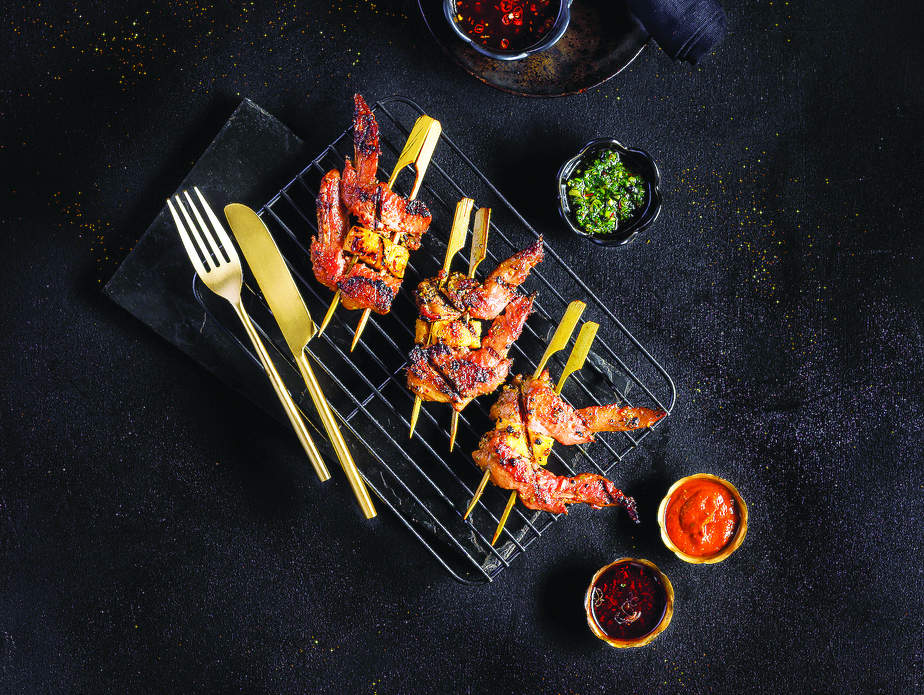In modern weight loss diet, carbs have never been hated this much. But is it wise?
Those were much simpler and much tastier times. Breakfast would be alu paratha made in ghee with fresh butter and curds. Lunch would be a lighter dal-chawal, or if it was a weekend, then rajma-chawal. Pakodas in the evening, and a good dal, sabji, mutton or paneer and roti for dinner. Such a high carb diet kept everyone happy, at the same time healthy.
Then came packaged foods. So paratha gave way to white bread and cornflakes. Ghee became a bad word and so did mutton. They were replaced by industrially produced broiler chicken which became more and more tasteless. People stopped enjoying their food but, contradictorily, bloated up.
Then the nutrition gurus started coming in, offering a quick fix solution to the weight and fat problem.
One of the first gurus/dietitians, as per Wikipedia was the English doctor George Cheyne. He himself was tremendously overweight and would constantly eat large quantities of rich food and drink. He began a meatless diet, taking only milk and vegetables, and soon regained his health. He began publicly recommending his diet for everyone suffering from obesity. In 1724, he wrote An Essay of Health and Long Life, in which he advises exercise and fresh air and avoiding luxury foods.
The first popular diet was “Banting”, named after the English undertaker William Banting. His diet was four meals per day, consisting of meat, greens, fruits and dry wine. The emphasis was on avoiding sugar, sweet foods, starch, beer, milk and butter. Banting’s pamphlet was popular for years to come, and would be used as a model for modern diets.
Since then we have had Atkins, South Beach, Paleo and what not, then Keto and its variants. Now the diets in vogue, under various names, have declared an all-out war against carbs.
This makes one wonder – are carbohydrates so bad? Is the weight loss resulting from going off carbs permanent or does it come back the moment a chhola bhatura passes the gullet? Won’t renouncing carbs totally harm the body because it is not the natural way of eating?
So, what is this Keto diet that tempts the foodies and excites the fitness freaks? Ketosis is an evolutionary mechanism the body initiates to survive when food intake is low. The Keto diet is basically a way to trigger it (without starving). This involves replacing foods high in carbs (roti, rice, even dals) with ones higher in protein or fat (meat, leafy greens etc.).
The reason this triggers Ketosis is because the body typically burns carbohydrates before it reserves fat. So if you deprive yourself of carb-rich food, even if you are consuming a healthy number of calories, you trick your body into thinking it’s starving.
Manvinder Kaur, an HR professional has had a metamorphosis with Keto diet. “Having fought a mostly lost battle with weight for almost 12 years, losing some and gaining more, keto has been a life changer for me. It has not only made me lighter by 25 kilos in a year but has given me immense physical stamina and confidence. Interestingly this has been well supported by my doctors too. As per them fat is the most overrated culprit for obesity and we just don’t pay any heed to the real cause for our obesity – carbohydrates and sugar. This way of eating is a little different from other diets as there isn’t any scope for cheating in one meal and then compensating for the same in the next one as once you are out of ketosis, you have to start afresh. It’s comparatively tougher for Indians as we are used to the concept of a carb accompaniment with every meal of ours. I have enjoyed this low carb, high fat and protein way of eating as the results are faster and the benefits are immense.”
Insurance professional Sherry Fernandes has a different take on this. “I lost about 7 kg on Keto the year before last. Stopped the diet because I had a long drawn out flu. Then put it all back on in a jiffy. I’ve done this before with all kinds of other low carb diets. It’s so tempting because they’re the only thing that works but you can’t get off the diet, ever,” she rues.
Adds Shefali Saxena, an ardent foodie and an admin with the 56,000+ member strong Facebook community Gurgaon Foodie, “Keto is anyway my worst food nightmare. How can you cut out some of the tastiest of foods from your diet? I am so not likely to ever do it!”
Says nutritionist Shraddha Chauhan, “Carbs are the primary source of energy for our body and that is because other energy giving macronutrients i.e. protein and fat take time to be digested. So, carb is the ‘to go’ energy source for the body. Regarding the new fads about skipping carbs, I say picking healthier carbs is always a must than skipping them altogether. The weight loss achieve through a diet that seems drastically different from what your normal diet would be, would definitely bring back the lost weight — be it carbs or fats or proteins.”
So what is it that we should do to get rid of our flab? Grandmothers always knew the answer. Fill your daily diet with real food, that is, carbohydrates that look as if they actually came out of the earth. Eat whole bhutta, for example, instead of corn flakes. Reach for a whole orange instead of orange juice. Choose whole grains, not white rice. The less processed and refined a carb is, the healthier – and better for your waistline.
Also nutrition wisdom suggests steering clear of fake carbs – foods that have been so overly processed – fiber stripped, nutrients stripped, water squeezed out, fat added, salt added, sugar added, calories added – that they are something our grandmothers would not have recognized as food.
So go to the local kirana shop, and stock up with real proteins, fats and carbs – everything that mother nature has given us and has not come out processed from a factory, and cook your meal at home. Sure, go out a few times a month but even there steer clear of food out of a packet, and you will be fine. Easier said than done? Perhaps!





